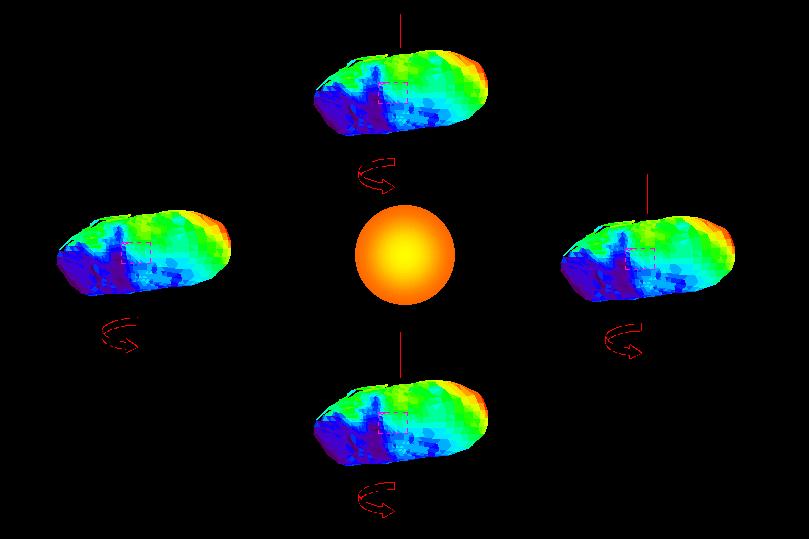
First I need to point out that the colors in this slide don't mean anything; they just look cool.
Another problem comes from Eros's rotation -- its axis of rotation is in same plane as its orbit around the sun. This means that, for five months, its northern hemisphere is in permanent daylight and its southern hempishere is in permanent night. For another five months, it has alternating day and night, and then for another five months, its northern hemisphere is in permanent night. We can only take pictures of regions that are illuminated by the sun, and since we go into orbit while the southern hemisphere is in permanent night, we only get data on the top half of Eros for a while.
One of the constraints we're working under is that, because all of NEAR's power comes from its solar panels, it always has to orbit around Eros's terminator (the line between night and day). This gives us very little control over what part of Eros we're looking at.

